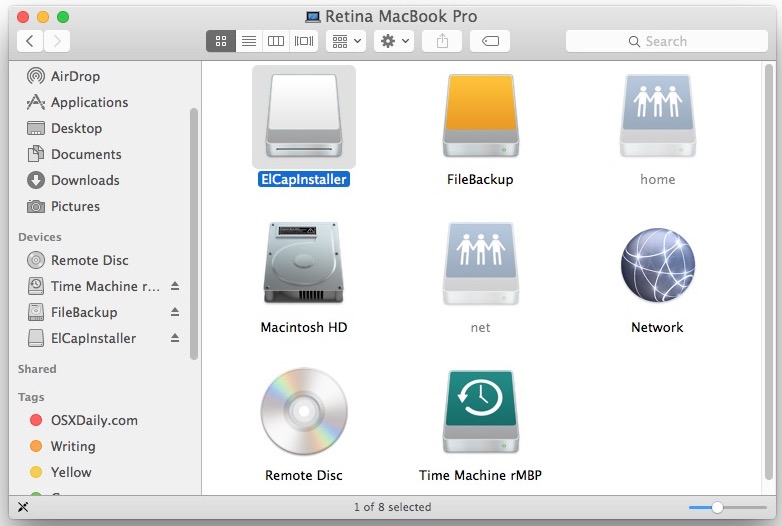Method #1: Create A Bootable Windows 10/8/7 USB on Mac with Bootcamp. As a dual-boot booting tool, Boot Camp Assistant is highly regarded in the field of creating Windows 7/8/10 bootable USB since it was released, it provides the ability to download drivers, re-partition, and add new partition on your Mac. Rufus is a small application that creates bootable USB drives, which can then be used to install or run Microsoft Windows, Linux or DOS. In just a few minutes, and with very few clicks, Rufus can help you run a new Operating System on your computer.
If you use pkgutil to expand the InstallMacOSX.pkg it opens to three items, the Distribution file, InstallMacOSX.pkg and Resources. You can alter the Distribution file to ignore the supported platform check, see below.

Creating the Install OS X El Capitan.app on a mac that came with a newer OS than El Capitan.
Download the InstallMacOSX.dmg from Section 4 of How To Upgrade To El Capitan
Double-click to open InstallMacOSX.dmg to Install MacOSX.pkg.
Drag InstallMacOSX.pkg to the Desktop.
Open Terminal, enter the text
A folder will be created on the Desktop after a while with the contents of the .pkg file.
In there you will see an item called Distribution, Control-click on that and select Open With
Bootable Usb Mac App Install
go to Other and select Text Edit.
When the file opens scroll down to the section that reads,
function isSupportedPlatform(){
Bootable Usb For Mac Os

type in at the end return true; so it now reads as,
function isSupportedPlatform(){return true;
Now click Save and close the document.
Mac Os Bootable Usb App
Go back to Terminal and enter the text,
press Return, after several minutes, be patient, (check to see if the prompt has returned to Terminal) a new package will be created on the Desktop.
When created double-click on that and an installation window will open where you will now convert the
new InstallElCapitan.pkg to the Install OS X El Capitan.app which will be placed in your Applications folder.
You can now create a bootable USB using the install app and createinstallmedia,
If you have the time I would be grateful if you could give this a trial, it works here on my mac, but I would like confirmation from yourself or any others reading this that the procedure works on macs that came with macOS Sierra or newer pre-installed. Oh and tell me if my description of the procedure is easy to follow and understand..